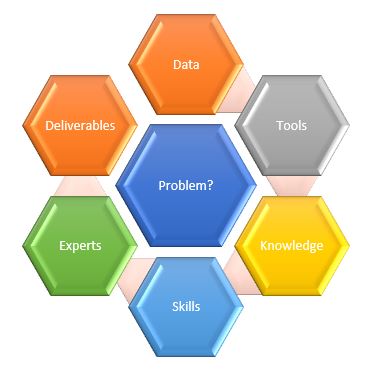How do you learn and who do you learn from? Perhaps you need a Community of Practice to accelerate your learning, but how do we get one going? I think we should start in the classroom.
For more than a decade now I have been delivering courses to industry on subjects as diverse as Basin Analysis and Petrography, from Plates to Pores, and everything in between. In order to teach these courses I have had to do a great deal of research and preparation, during which I have learned a huge amount.
This got me to thinking how do I learn?, and who taught me how to learn? I realised then that nobody had taught me how to learn. Teachers “taught” me, but I had to work out how to learn on my own, and in the early years I struggled. However, after many decades of trial and error, my learning skills are now reasonably well honed, but I am still learning new ways of learning all the time.
One of the best ways for me to learn, I find, is to research a new subject, try to summarise it simply on one sheet of paper, ideally with an annotated diagram, then use this as the basis for a verbal explanation. If I can explain it, then I understand it. Having established this way of working I discovered it is essentially the “Feynman Method“, after the Nobel Laureate particle physicist Richard Feynman.
It is this method that allowed me to get up to speed quickly with new subject material and prepare appropriate teaching materials that would help others understand.
But there is a problem with this. The process of presenting the ready-thought-out summary to the class enables me to consolidate my understanding and hopefully also helps the audience to understand. But did they learn anything? Learning is about internalising. Actually fixing the knowledge in your brain, which we largely achieve through repetition. Have they internalised anything? Some may have, but most have probably not, especially if they didn’t process and internalise anything by making notes or drawing pictures themselves. Some students very often listen, then take a picture of my drawings during the coffee break, thinking that they will somehow know it if they have a picture on their phone!
Students need to “do things” if they want to internalise the knowledge and make it their own, not just listen. We do this to some extent in the classroom with exercises. But even then the exercises can be seen as an exercise in how to complete this exercise!
Thinking about these things also made me think about how many courses I have been on in my career. I very often ask the class how many courses they think I have attended, giving that I teach around a dozen different subjects. The estimates are usually in the 100s. Many of the students in the classroom think that you can only learn by attending classes. In fact I have only attended one class in 30+ years post-PhD. The students can’t believe how that is possible!
I learned most by doing research, reading, writing, discussing with people and teaching. All of which require constant reprocessing and recalibration of your ideas and your thinking. Constant rebuilding and refinement of your mind models.
So why don’t we run courses like this?
So I have a suggestion for a different way of teaching:
- Pick a Subject for the class, for example, Formation Evaluation
- In the first session, get the class to work in teams to define the subject in terms of
- The purpose – why do we do it? What are the problems we are trying to solve?
- The data we need to acquire or derive to address the problems
- The tools we should use to acquire or manipulate the data.
- The skills we need to use the tools.
- The fundamental knowledge we need to apply those skills
- Which experts should have both the knowledge and the skill
- The deliverables that the experts routinely generate to illustrate their conclusions

Once the class has created a list of problems, data, tools, skills, knowledge and deliverables, then we can plan the rest of the course. Ideally we need to extract 9 key areas of interest or themes (nudged by the expert facilitator, who already has a plan ;-)), so that each team can spend half a day researching, summarising, documenting and explaining the fundamentals of each theme, and testing their knowledge and understanding by teaching each other (The Feynman Method).
The information they need is all out there on the net on specialist websites and society wikis (e.g. Petrowiki). They just need to practice finding it, filtering it, summarising it, linking to it, communicating it and using it to solve problems.
I adopted this approach in a recent course where the teams mind-mapped each element of the program in these terms. On several occasions I caught trainees “cheating”. Or at least they thought they were cheating. They were in a huddle in the corner watching a youtube video about some aspect of formation evaluation, to make sure they had it right. I had to convince them that doing your research, checking your facts, and clarifying your thinking was most definitely not cheating!
As part of this process, each team would compile their findings in an interactive web-site, which could be a Google Site or Microsoft-Sharepoint-based website. allowing everybody to contribute and become practiced with the collaborative technology.
The end product of the course would be a skilled Community of Practice, that knows how to research a subject, document it, collaborate, cooperate, coordinate, co-create and share their best practices.
I think this would be a far better way to learn and prepare the students to continue learning as a Community of Practice in the future.

No Comments Yet